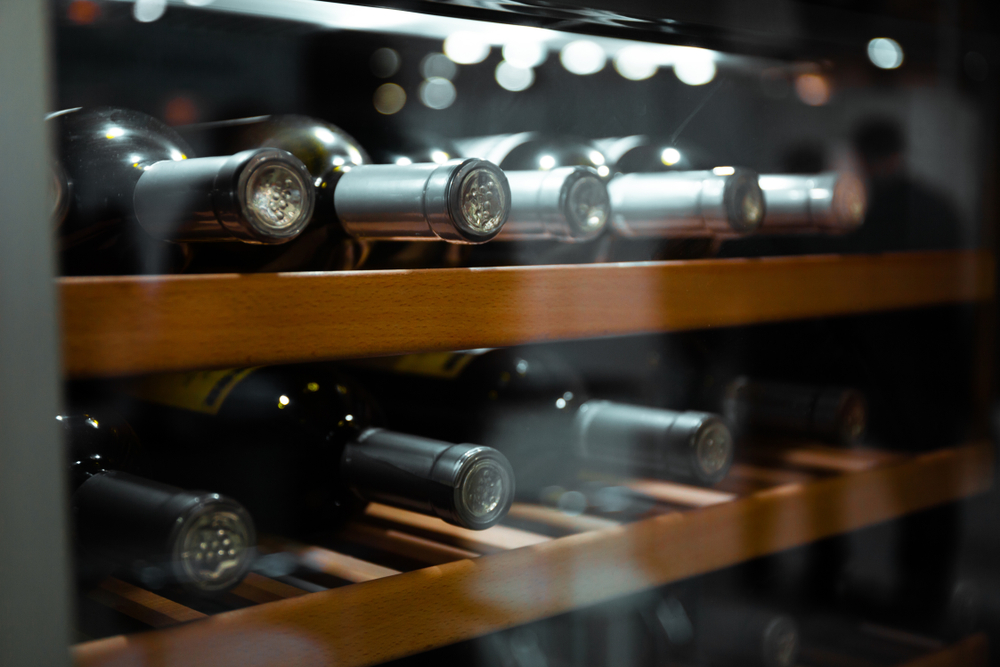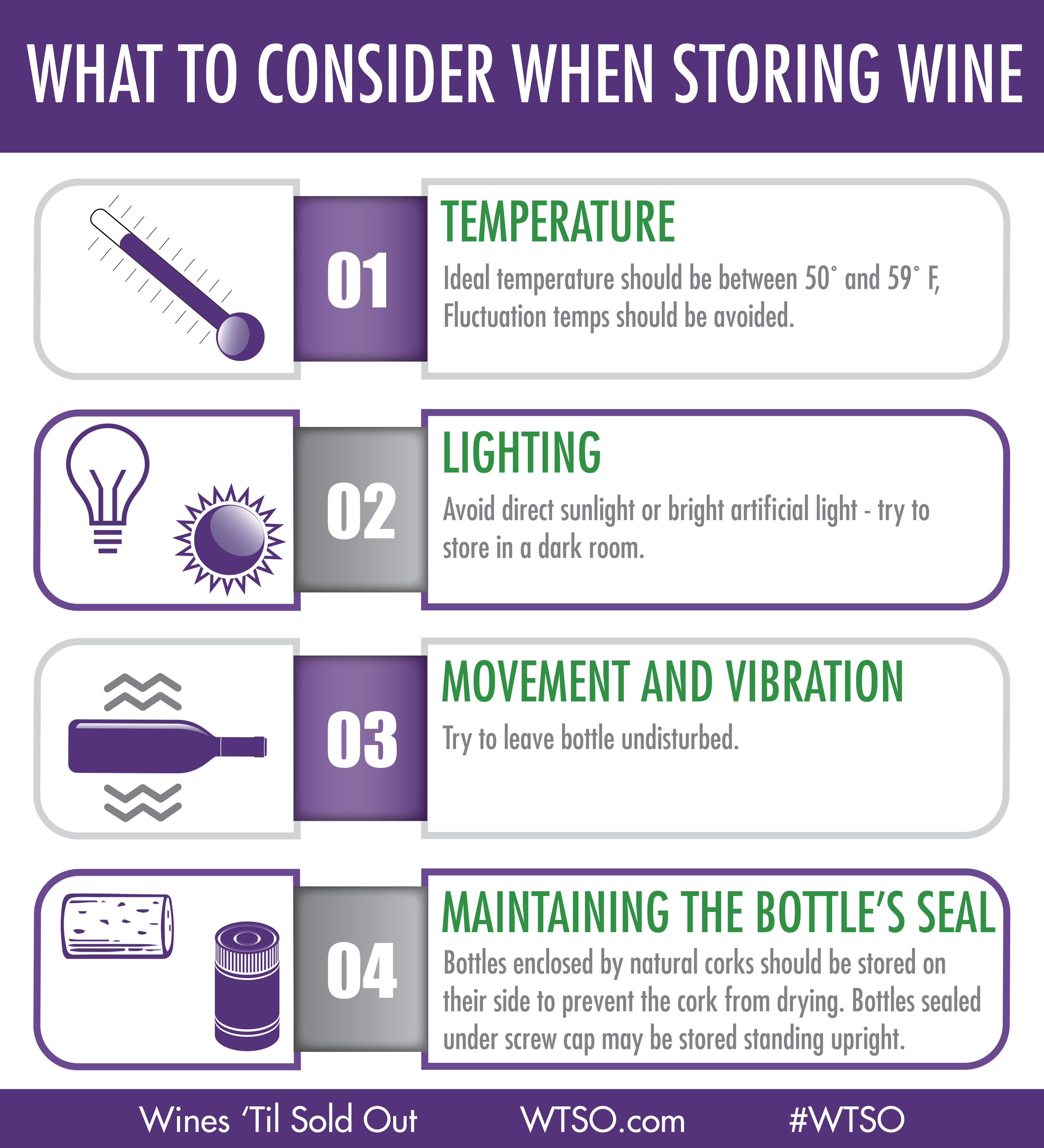Whether you’re saving a bottle of wine to drink next week or twenty years down the road, there are certain measures you can take to ensure that your favorite wines are served and enjoyed in the best condition possible. The following factors should be considered when storing one bottle, or an entire collection:
Temperature
The optimal temperature range for wine storage is between 50° and 59° F. Keeping bottles at too low or high a temperature can have a negative effect on their condition, causing undesirable aromas and flavors to develop over time. Whenever practical, fluctuating temperatures should also be avoided.
If you are concerned about your Wines ‘Til Sold Out orders shipping in extreme temperatures, you can always take advantage of our Future Ship Date option at checkout.
Lighting
Steer clear of exposing bottles to direct sunlight or bright artificial lights, as these influences can heat and spoil the wine. Storing wine in dark rooms with minimal light will greatly increase your chances of having pristine bottles to drink in the future.
Movement and Vibration
Try not to disturb wine bottles until you are ready to drink them. Vibrations can interfere with the long-term development of even the heartiest of wines.
Maintaining the Bottle’s Seal
Bottles enclosed by natural cork should be stored on their sides, in order to prevent the cork from drying. A dry cork can allow too much air to enter the bottle – thereby oxidizing the wine. Keeping the relative humidity level between 50% and 70% can also help corks to function as intended. Bottles sealed under screwcap may be stored standing upright.
Where to Store Wine
History has shown us that caves can serve as excellent places to keep and age wine. Subterranean wine cellars attempt to recreate the dark, cool, and humid conditions that they provide. Modern cellars are often built above ground, ideally with temperature and humidity controls. Many companies sell refrigerated units specifically designed to store wine as well. Brands and models vary considerably in price and storage capacity, but offer a viable option for holding onto special bottles over time. When space at home is limited, there are also climate-controlled facilities where units can be rented out to store your wine. If you’re looking for a more cost-effective alternative, keeping bottles in a dark, cool area of the house, like a closet or basement, will help to protect against temperature extremes and damage from light.
Where to Avoid Storing Wine
As a general rule of thumb, here are some places where you probably shouldn’t store wine:

- In an attic
- In a garage
- In a car, especially during hot weather
- Near a stove or oven
- In a kitchen refrigerator for long periods of time
- In a freezer
- Near windows
- Near a radiator or hot water heater
- Near a fireplace
A Final Note
Wine comes in a range of styles. Some are powerful and intense, while others are subtle and delicate. Some are best to drink young, and still others are better with age. Regardless of which wines are fashionable to drink now or in the future, taking steps to preserve the individual character and integrity of each bottle is an essential part of understanding and appreciating this unique and expressive beverage.




